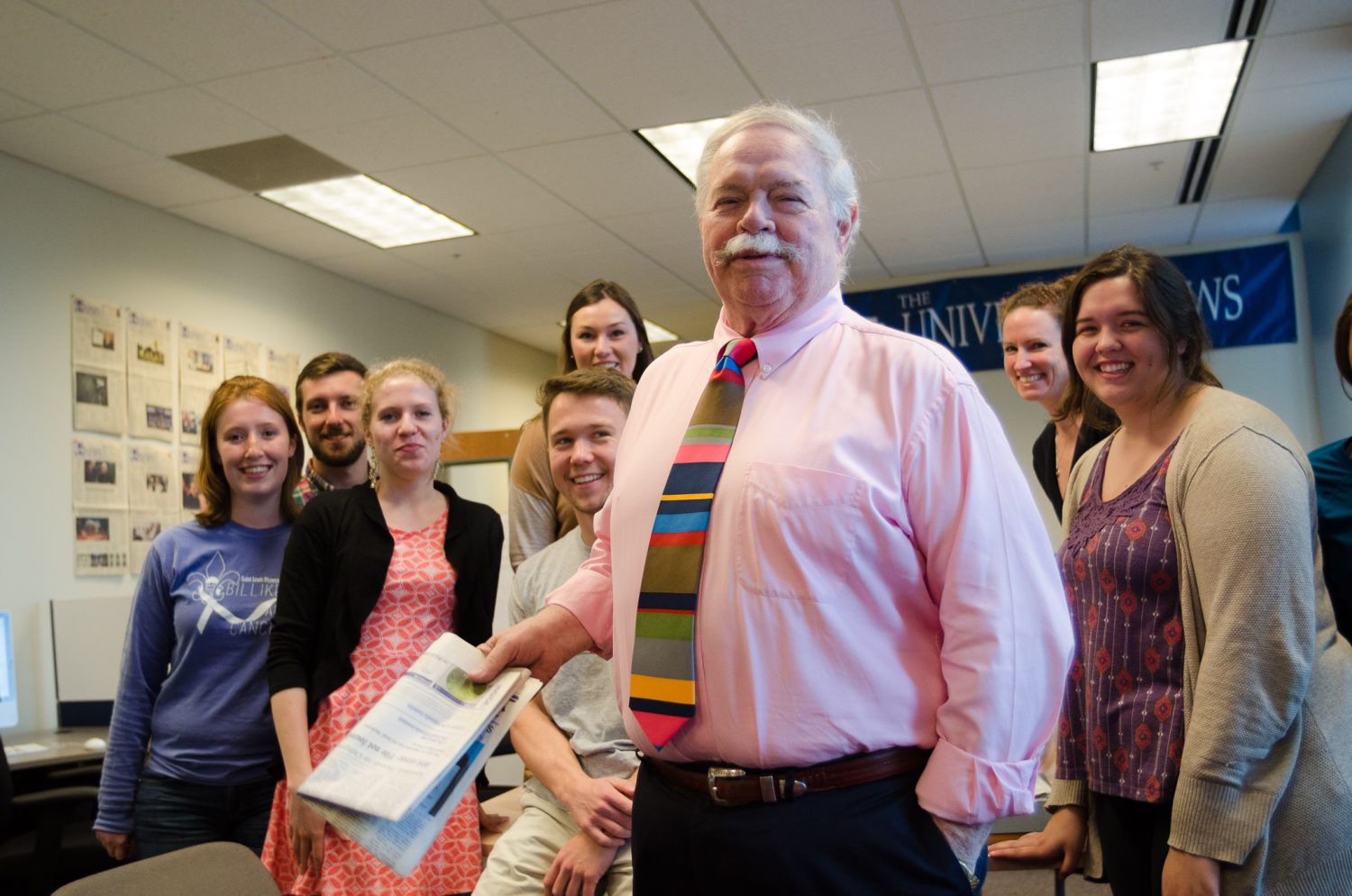A gospel choir, parishioners dancing in the aisles and independent cries of “Amen” rising up from the congregation. These may not seem like typical elements of a Catholic Mass, especially to Saint Louis University students, who attend the generally traditional Masses at St. Francis Xavier College Church. Just a few blocks north of SLU’s campus, however, there is another thriving Catholic community that celebrates with vigor and vocalization–St. Alphonsus “Rock” Church.
The predominantly African-American congregation of the Rock gathers on Sundays in the historic stone church at the intersection of Cook and Grand Boulevard. Its steeples rise over the beginnings of North St. Louis, where crumbling buildings are juxtaposed with sparkling fast-food joints and the perimeter of the cultural gems of Grand Center.
The Rock has thrived for over a century, but its history as an African-American Catholic Church is more recent. The Redemptorists founded the Rock in 1867, and soon after it became home to the first shrine to Our Mother of Perpetual Help. The shrine drew thousands of visitors in the ’20s and ’30s, who would come by streetcar to daily services, but the flood of visitors tapered off after the desegregation of all churches in the St. Louis Archdiocese in the ’40s.
The desegregation caused the mostly Irish-American parishioners to leave the Rock.
The mostly black congregation of nearby St. Clement’s began to attend services at the Rock. According to pastor Rick M. Potts, C.Ss.R., people from around the city still came to visit the shrine amidst the “white flight” of the ’50s and ’60s, but did not attend Mass with the burgeoning African American congregation.
The Rock reshaped its image and momentum throughout the ’70s when it came into its own as an African-American congregation. Three decades later, the experience of attending Mass at the Rock is unique and spiritual in ways that many Catholic Masses are not. There are 85 ministries operating out of the church, including the HIV/AIDS ministry for the entire arch-diocese as well as dozens of community outreach programs. Kids from the neighborhood come to the Rock for tutoring, to play on their sports teams and just to hang out.
And then there’s Mass.
The typically two-hour long service pivots on participation by the congregation and the choir.
Clusters of people mingle in the aisles under the dramatic arches and pillars and illuminating stained-glass windows. Nearly everyone wandering up and down the aisles offers a smile to a stranger and an embrace to a friend.
Little girls with braids and puffy winter coats kiss elderly women and play quiet games between the pews.
The opening procession is an immediate crescendo, with the choir and congregation clapping and swaying, as the altar girls dance slowly up the aisles.
Incense in an African bowl is lifted, dipped and swirled up the aisle by a dancing woman in a bright blue dress. The lectors wear shimmering gold outfits, and Afro-centered artifacts are presented throughout the Mass.
Potts says Mass and addresses the parishioners as “Church.” People stand up and cry out frequently, affirming the words of the priest and the swelling vocals of the choir. Steel drums and stellar solos accent the music that permeates the service.
SLU students venture up the street occasionally to participate in the Rock’s services, said Potts, but usually as an assignment for classes.
Although some SLU students have stayed and become a part of the congregation, Potts said that many SLU students are unnecessarily afraid of the neighborhood surrounding the Rock.
He does not suggest roaming up Grand Boulevard at 2 a.m., but he said that the neighborhood is not particularly dangerous. Potts encourages SLU students to come and visit the Rock, and he emphasized that there are a lot of possibilities for students interested in ministry or tutoring.
Sunday Masses are celebrated at 8:15 a.m. and 11 a.m. For more information call 533-0304 or visit www.stalphonsusrock.org.



